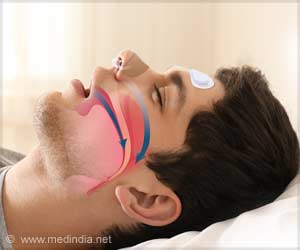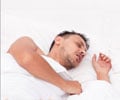Mechanism of obstructive sleep apnea (OSA) in tetraplegic patients identified with potential applications in development of targeted therapies, as well as future research.
- Incidence of obstructive sleep apnea in tetraplegic (paralysis of all four limbs and torso) patients is high (nearly 70 percent) and the reason for this is not clear.
- Scientists identify possible reason for this phenomenon in the current study, which may help develop targeted therapies, that would help improve quality of life for these patients.
- Obstructive sleep apnea refers to repetitive narrowing of the upper airway (back of nose and throat) during sleep with potentially serious health consequences and an increased risk of diabetes and high blood pressure (hypertension).
Aim of Study
The current study aims at finding out how throat muscles respond in tetraplegic patients suffering from sleep apnea. The answer to this question may explain the reason for the high incidence of OSA in these patients and using this knowledge to develop better and more effective treatments that could improve the quality of their life.Details of Study
- Volunteers suffering from OSA (including tetraplegics as well as those without tetraplegia for comparison) were assessed in sleep physiology studies in Sydney (NeuRA) and Melbourne (IBAS).
- To replicate upper airway narrowing characteristic of OSA, brief pulses of suction were delivered to the volunteers through a breathing mask.
- Simultaneously, electrodes were inserted into the largest muscle of the upper respiratory tract, namely the genioglossus, to measure key reflex responses.
- The study team thought that the throat reflex responses would be same in all patients with OSA, irrespective of whether they were suffering from tetraplegia or not.
- The current study however found that in several cases of tetraplegics with sleep apnea, key protective throat reflexes were not present, resulting in the switching off (rather than increased activity) of the genioglossus muscle, normally observed in OSA patients who do not have tetraplegia.
Activity of Genioglossus Muscle in OSA Patients Who Don’t Have Tetraplegia/Have Tetraplegia
- Normally, the contraction of upper airway dilator muscles, such as the genioglossus is critical in keeping the upper airway open enabling unrestricted air flow.
- Patients (without tetraplegia) suffering from OSA demonstrated increased activity on genioglossus electromyogram (EMG) during the wakeful state.
- This neuromuscular compensation prevents apneic episodes during the day by keeping the airway open.
- In tetraplegics with OSA, genioglossus muscle activity was found to be reduced.
Optimism and Enthusiasm of Participants Key to Success of Study
Laura Gainche, one of the study team members, praised the optimism, endurance and willingness of all the research's participants, especially shown by their first participant, JV, who suffered his spinal injury at the age of 16 "We were worried that nobody would take part in our long, tedious protocol. However, he (JV) just brushed it off like it was nothing”, saying “A two millimeter wide catheter in the nose? What a joke compared to the feeding tubes I had before"!"The experimental day was intense to say the least; six people wheeled his bed up a steep slope to a test room about 100m away from the main hospital. Somehow, we made it through the lengthy protocol together, and it was mostly thanks to him, our first rock star patient! These participants gave us confidence that this project was feasible, and in the future the data produced will hopefully make their lives a tiny bit easier".
What is Obstructive Sleep Apnea (OSA)?
Apnea means absence of breathing. Sleep apnea refers to apneic episodes occurring when a person is asleep. In obstructive sleep apnea the breathing stops due to obstruction to air flow in the upper airway. When the airway is narrowed with resultant restricted air flow, the person snores (breathes through mouth). If however, the airflow is completely blocked, breathing stops for about 10 seconds and resumes once again.Persons suffering from OSA have impaired sleep and suffer from excessive daytime drowsiness, irritability and inability to concentrate.
The most effective treatment for OSA is continuous positive airway pressure (CPAP). The slightly high air pressure keeps the throat open while the patient is breathing and prevents blockage of the airway.
Conclusion
Despite the fact that the study was conducted in the wakeful state and not during sleep, the scientists are optimistic that the findings of their study would help future sleep physiology studies, as well as in development of safe and effective targeted therapies for tetraplegic patients with sleep apnea.Reference:
- Noradrenergic Activation of Hypoglossal Nucleus Modulates the Central Regulation of Genioglossus in Chronic Intermittent Hypoxic Rats - (https://www.frontiersin.org/articles/10.3389/fneur.2017.00171/full)
Source-Medindia
















